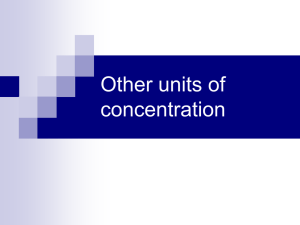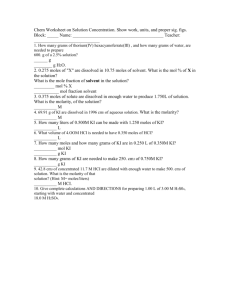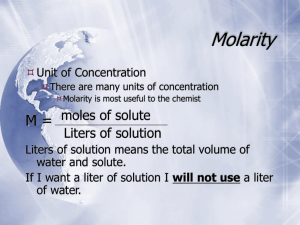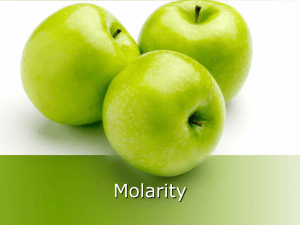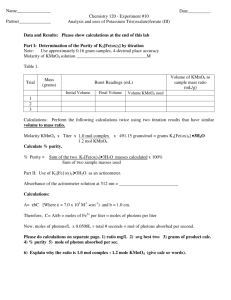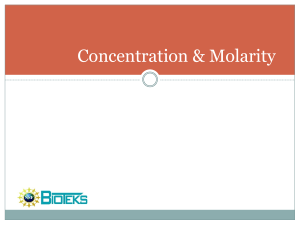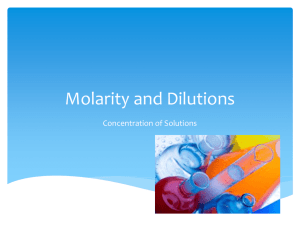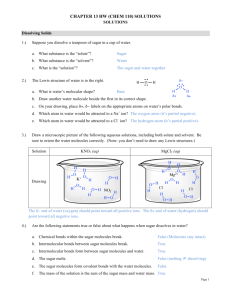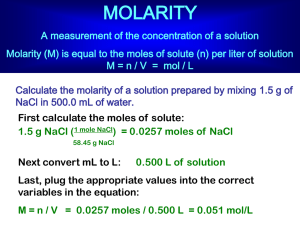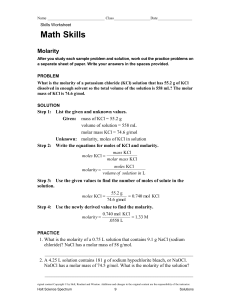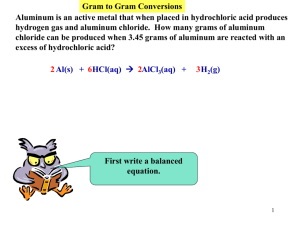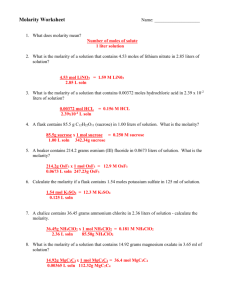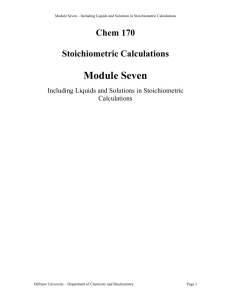Molar Mass Practice Worksheet
advertisement
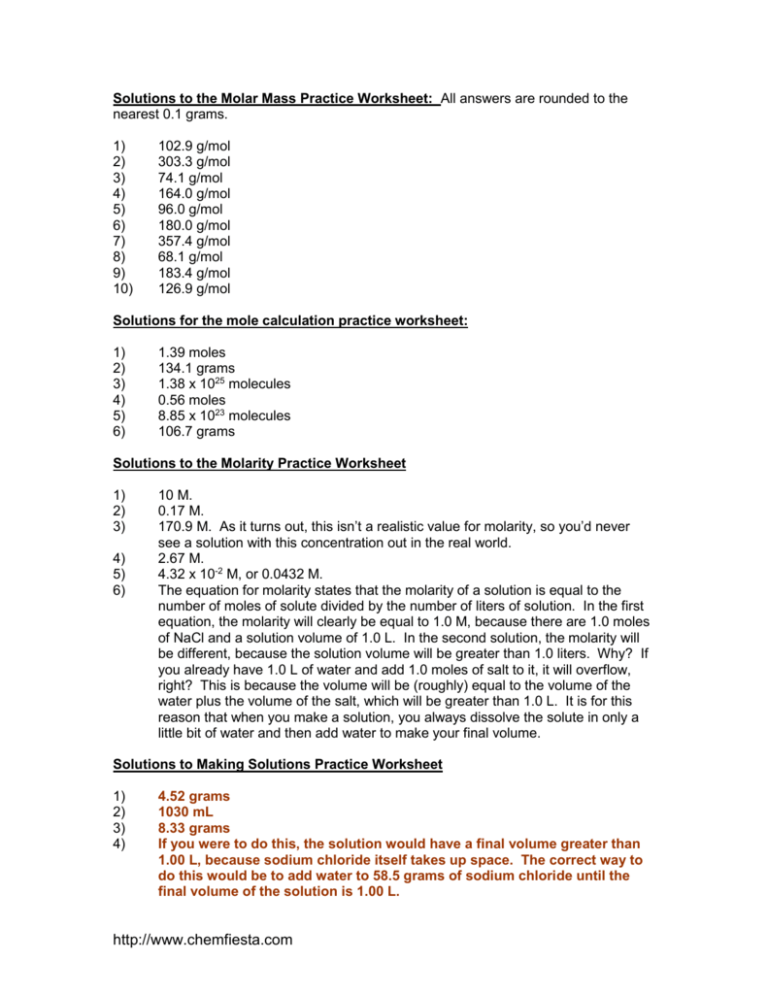
Solutions to the Molar Mass Practice Worksheet: All answers are rounded to the nearest 0.1 grams. 1) 2) 3) 4) 5) 6) 7) 8) 9) 10) 102.9 g/mol 303.3 g/mol 74.1 g/mol 164.0 g/mol 96.0 g/mol 180.0 g/mol 357.4 g/mol 68.1 g/mol 183.4 g/mol 126.9 g/mol Solutions for the mole calculation practice worksheet: 1) 2) 3) 4) 5) 6) 1.39 moles 134.1 grams 1.38 x 1025 molecules 0.56 moles 8.85 x 1023 molecules 106.7 grams Solutions to the Molarity Practice Worksheet 1) 2) 3) 4) 5) 6) 10 M. 0.17 M. 170.9 M. As it turns out, this isn’t a realistic value for molarity, so you’d never see a solution with this concentration out in the real world. 2.67 M. 4.32 x 10-2 M, or 0.0432 M. The equation for molarity states that the molarity of a solution is equal to the number of moles of solute divided by the number of liters of solution. In the first equation, the molarity will clearly be equal to 1.0 M, because there are 1.0 moles of NaCl and a solution volume of 1.0 L. In the second solution, the molarity will be different, because the solution volume will be greater than 1.0 liters. Why? If you already have 1.0 L of water and add 1.0 moles of salt to it, it will overflow, right? This is because the volume will be (roughly) equal to the volume of the water plus the volume of the salt, which will be greater than 1.0 L. It is for this reason that when you make a solution, you always dissolve the solute in only a little bit of water and then add water to make your final volume. Solutions to Making Solutions Practice Worksheet 1) 2) 3) 4) 4.52 grams 1030 mL 8.33 grams If you were to do this, the solution would have a final volume greater than 1.00 L, because sodium chloride itself takes up space. The correct way to do this would be to add water to 58.5 grams of sodium chloride until the final volume of the solution is 1.00 L. http://www.chemfiesta.com
